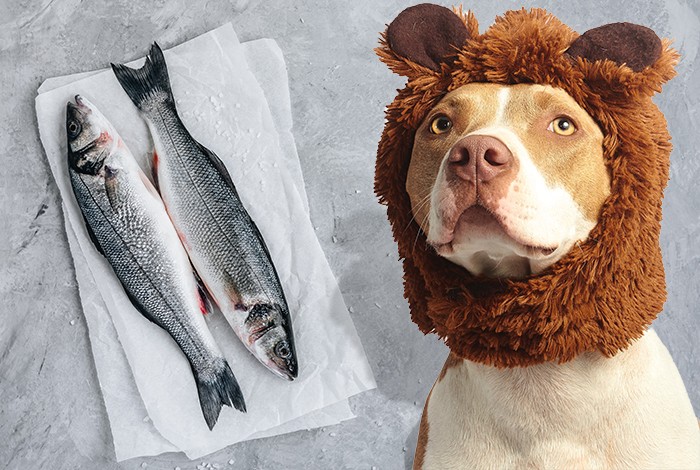Can dogs eat fish? Yes, fish is an excellent source of omega-3 fatty acids for dogs that benefits a dog’s health in many ways, such as reducing inflammation and relieving pain.
The nutrient content varies depending on the type of fish and the water region it’s sourced from. Unfortunately, as dangerous heavy metals, especially mercury, and lead, continue to contaminate many regions of the ocean, many types of fish accumulate high levels of these harmful pollutants.
To help you decide what fish are safer options for your pooch, we have compiled a list of the best 10 fish that are safe and nutritious for dogs.

1. Anchovies for Dogs
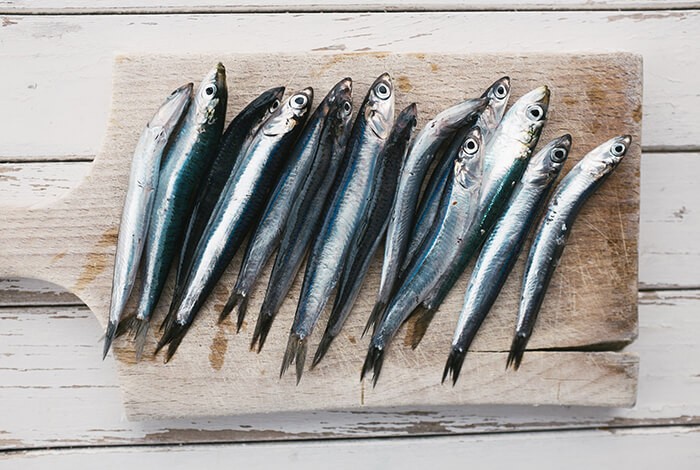 Anchovy is a short-lived type of fish; thus, it is less tainted with harmful chemicals. It is also one of the greatest sources of EPA and DHA omega-3 fatty acids. These are known to reduce inflammation, support healthy immune systems, and keep your dog’s skin and coat healthy and shiny.
Anchovy is a short-lived type of fish; thus, it is less tainted with harmful chemicals. It is also one of the greatest sources of EPA and DHA omega-3 fatty acids. These are known to reduce inflammation, support healthy immune systems, and keep your dog’s skin and coat healthy and shiny.
This fish is rich in protein, vitamin B12, and vitamin D. They are also a low-calorie snack that can aid in your dog’s weight loss.
When choosing anchovies, go for fresh ones that are not packed in salt or oil. Canned anchovies are okay if they are packed in water. Avoid those that contain salt, oil, and spices, as these may cause stomach problems and even serious health issues such as sodium toxicity, heart disease, and pancreatitis.
Although anchovies are small, it is best to cut them into smaller pieces before serving them, especially if your dog loves to gobble up his food. This is to avoid the dangers of choking, particularly for small dog breeds.
2. Catfish for Dogs
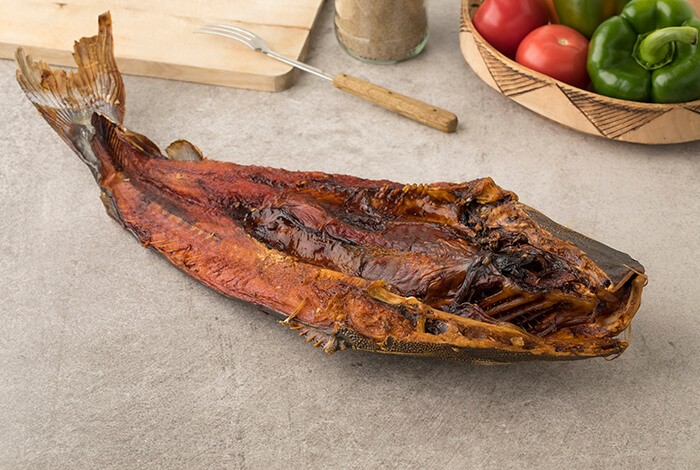 Catfish are known to be significantly low in mercury, making it one of the safest types of fish for dogs. It is rich in omega-3 fatty acids, vitamin A, vitamin B12, vitamin C, calcium, and iron.
Catfish are known to be significantly low in mercury, making it one of the safest types of fish for dogs. It is rich in omega-3 fatty acids, vitamin A, vitamin B12, vitamin C, calcium, and iron.
Similar to anchovies, catfish is a low-calorie snack for dogs. When preparing it for Fido, make sure to remove all the fish bones to keep him safe from any potential accidents and an expensive visit to the veterinary.
3. Cod for Dogs
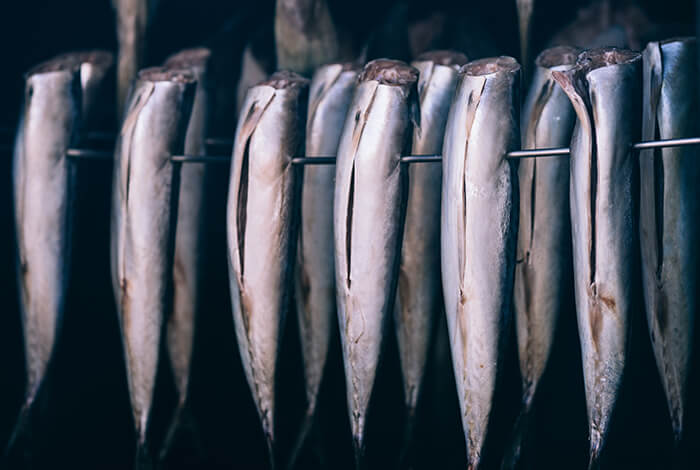 Cod is a good source of protein and omega-3 fatty acids. It contains loads of essential vitamins and minerals too. These include vitamin B12, choline, iodine, niacin, selenium, and phosphorous.
Cod is a good source of protein and omega-3 fatty acids. It contains loads of essential vitamins and minerals too. These include vitamin B12, choline, iodine, niacin, selenium, and phosphorous.
Since cod is very low in mercury, you can add it to your dog’s food. But, before feeding your dog cod, debone it to prevent accidents like choking.
4. Flounder for Dogs
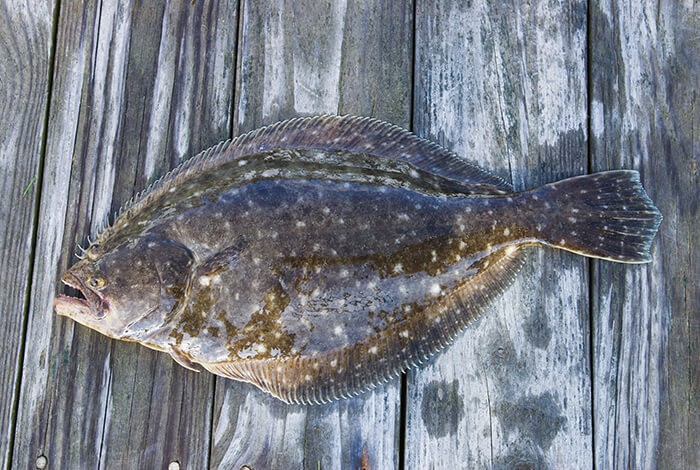 Flounder is low in saturated or unhealthy fats and high in omega-3 fatty acids. It is also low in calories, making it a good snack for dogs, especially those who need to shed a few pounds.
Flounder is low in saturated or unhealthy fats and high in omega-3 fatty acids. It is also low in calories, making it a good snack for dogs, especially those who need to shed a few pounds.
Flounder contains high levels of vitamin B, magnesium, and phosphorous too. Be sure to remove all the fish bones before serving flounder to your pooch.
5. Haddock for Dogs
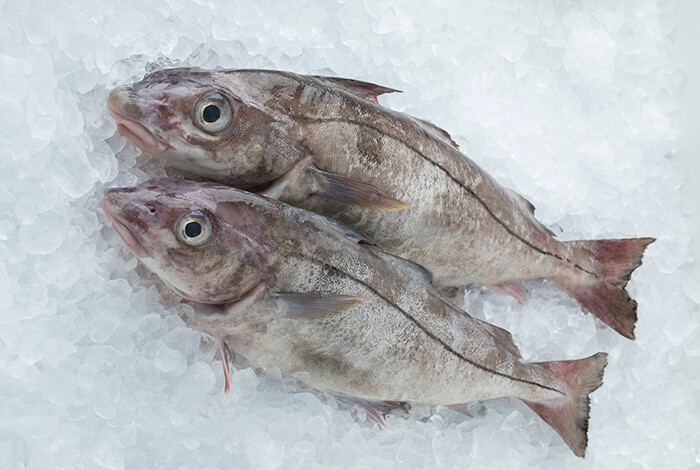 Dogs can eat haddock as it has low levels of mercury, high in protein, and is low in calories. This fish is packed with vitamin A, vitamin B6, and B12, magnesium, niacin, and riboflavin.
Dogs can eat haddock as it has low levels of mercury, high in protein, and is low in calories. This fish is packed with vitamin A, vitamin B6, and B12, magnesium, niacin, and riboflavin.
Some of the health benefits of these nutrients include enhancing your dog’s cognitive function and alleviating digestive issues such as diarrhea and constipation. Just like with other types of fish, do not forget to get rid of all the bones before serving it to your dog.
6. Mackerel for Dogs
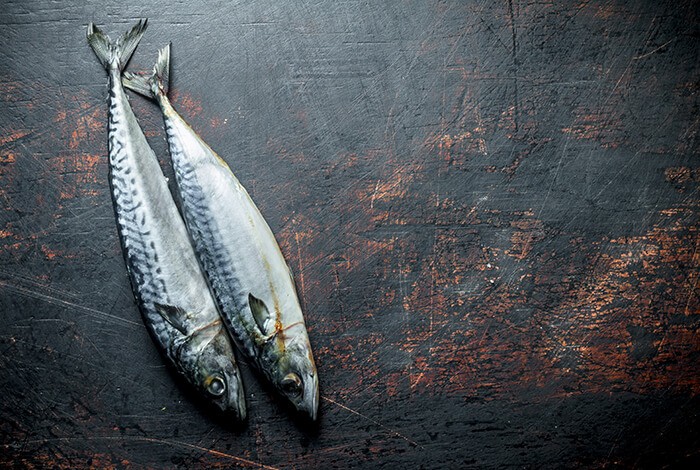 Another fish that is an excellent source of omega-3 fatty acids and protein is mackerel. It contains a chock full of nutrients, including vitamins B12, K, and selenium. Coenzyme Q10, a powerful antioxidant, is found in mackerel as well. It gives dogs a great energy boost and enhances their dental health.
Another fish that is an excellent source of omega-3 fatty acids and protein is mackerel. It contains a chock full of nutrients, including vitamins B12, K, and selenium. Coenzyme Q10, a powerful antioxidant, is found in mackerel as well. It gives dogs a great energy boost and enhances their dental health.
Avoid buying Spanish mackerel and king mackerel as they are large fish species. Large fish generally have high levels of mercury in their bodies. Opt for their smaller counterparts instead, such as the Atlantic mackerel. This type is less susceptible to environmental pollutants due to its size.
7. Pollock for Dogs
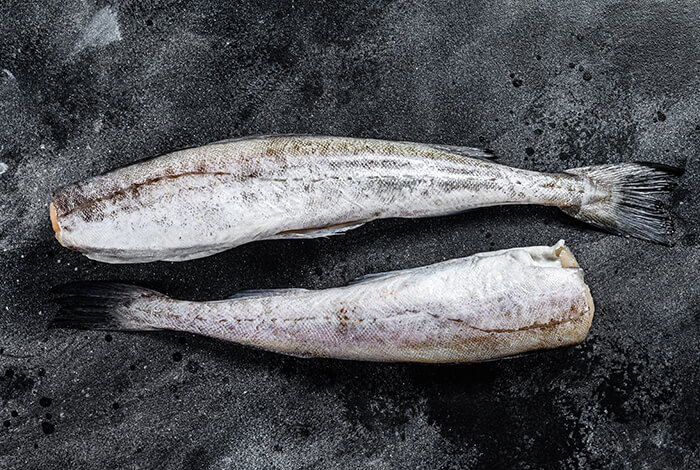 Pollock offers a lot of nutrition for dogs without bulking them up with calories, unhealthy fats, and carbohydrates.
Pollock offers a lot of nutrition for dogs without bulking them up with calories, unhealthy fats, and carbohydrates.
It is rich in omega-3 fatty acids. It also contains many vitamins and minerals, such as vitamin B6, vitamin B12, niacin, riboflavin, selenium, magnesium, iron, zinc, and copper. Pollock contains fewer chemical contaminants, making it a good fish choice for dogs.
8. Salmon for Dogs
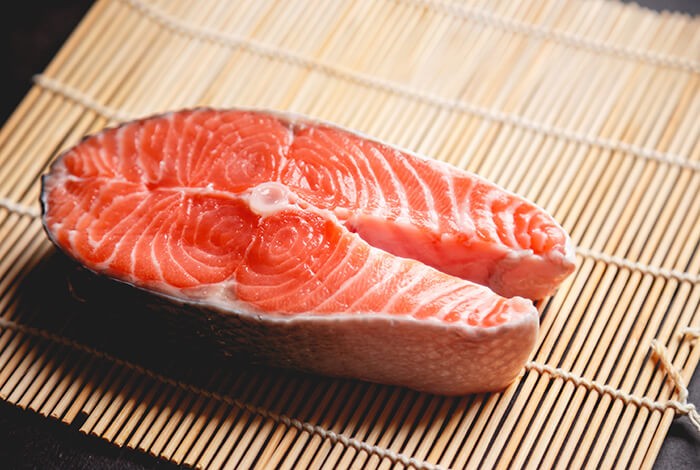 Salmon is one of the best sources of EPA and DHA omega-3 fatty acids. It is widely known for its beneficial effects on dogs, such as preventing heart disease, helping with weight loss, soothing joint problems, and improving their skin and coat. Salmon is dense with nutrients as it is loaded with vitamins A, D, and B, as well as magnesium, potassium, and zinc.
Salmon is one of the best sources of EPA and DHA omega-3 fatty acids. It is widely known for its beneficial effects on dogs, such as preventing heart disease, helping with weight loss, soothing joint problems, and improving their skin and coat. Salmon is dense with nutrients as it is loaded with vitamins A, D, and B, as well as magnesium, potassium, and zinc.
Usually, salmon fished from the waters of the United States has high levels of harmful chemicals. Choose ones that are from Canada or Scandinavia, as the waters in these regions have lower pollution.
Many vets advise against serving raw salmon as they may contain Neorickettsia helminthoeca parasites that cause salmon poisoning. This alarming condition will lead them to suffer from fever, diarrhea, dehydration, and vomiting. Thus, only serve cooked salmon to your pup.
9. Sardines for Dogs
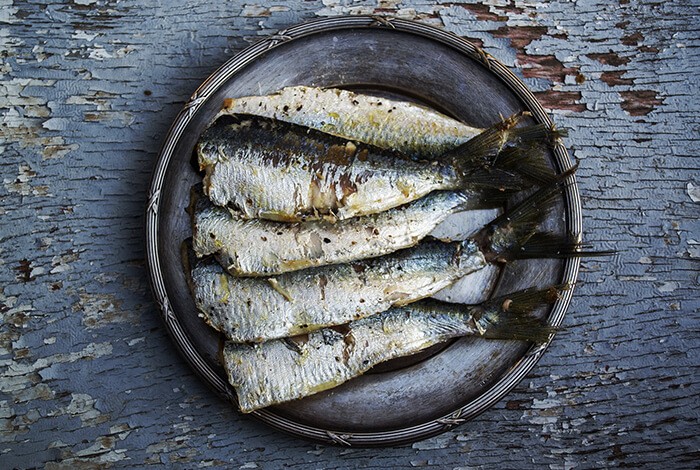 Since sardines are small, they contain less mercury compared to larger species of fish. Not only are sardines packed with omega-3 fatty acids, but they are also full of coenzyme Q10.
Since sardines are small, they contain less mercury compared to larger species of fish. Not only are sardines packed with omega-3 fatty acids, but they are also full of coenzyme Q10.
Sardines that contain sauces and high amounts of sodium are a big no-no for dogs. Always pick sardines that are packed in water and free from other added ingredients. Oils and salts will only cause detrimental effects on Fido’s health, such as stomach problems, sudden weight gain, and kidney diseases.
10. Trout for Dogs
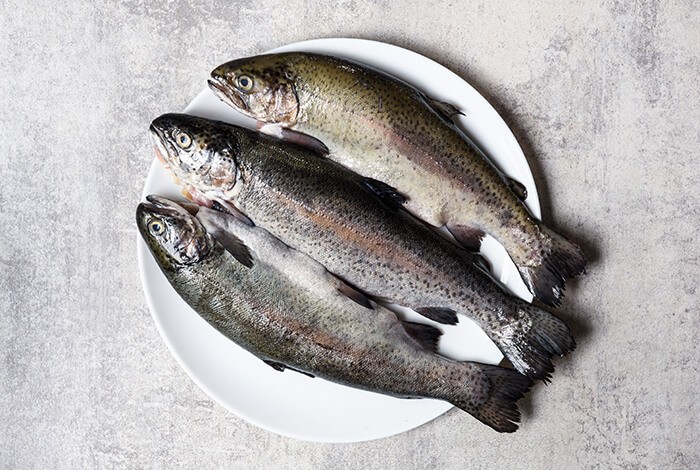 Trout has lean meat that is low in calories and high in protein. Dogs can also get loads of heart-healthy omega-3 fatty acids from this fish. It is an excellent source of vitamins and minerals too. Trout contains vitamin B6, vitamin B12, niacin, thiamin, and riboflavin.
Trout has lean meat that is low in calories and high in protein. Dogs can also get loads of heart-healthy omega-3 fatty acids from this fish. It is an excellent source of vitamins and minerals too. Trout contains vitamin B6, vitamin B12, niacin, thiamin, and riboflavin.
Moreover, it has low mercury concentrations, so it is a safe treat for your furry companion.
Which is better: wild or farmed fish?
Wild fish are better choices compared to farmed ones. Their natural diet makes them a healthier option. However, it is crucial to purchase wild fish coming from countries with stringent health and quality regulations to avoid high chemical pollutants contamination.
Farmed fish are often fed on processed, high-fat, high-protein feed. And many fish farms use chemicals and antibiotics to tamp down diseases. These certain chemicals are harmful to dogs as they can cause cancer.
How to safely prepare fish for your dog
 Below are a few helpful guidelines that you can follow to ensure that you are preparing fish safely for your pup:
Below are a few helpful guidelines that you can follow to ensure that you are preparing fish safely for your pup:
- Choose wild, fresh fish from countries with strict and proper health and quality protocols.
- Do not buy shark meat, tilefish, swordfish, king mackerel, or canned albacore tuna. These types of fish often contain incredibly high levels of mercury, making them harmful for dogs to eat.
- If possible, pick deboned fish. But always double-check to make sure that there are no stray bones left.
- It is okay to leave the fish skin on, as it’s safe and nutritious for dogs to eat. It contains protein, essential fatty acids, and vitamin E, which are beneficial for your dog’s health.
Just make sure to remove the scales as they are potential choking hazards, especially for small dogs.
- If you opt to feed raw fish to your dog as a part of his raw diet, follow proper sanitary measures. These include cleaning and disinfecting the utensils, surfaces, and items that have come in contact with the raw fish and washing your hands thoroughly right after preparation.
- Cooked fish should be free of additional ingredients such as oils, salt, and spices. Serve it plain to avoid digestive problems and other health issues.
- Some dogs have food allergies, so be cautious when feeding fish to your pup for the first time. Offer it in small amounts and watch out for signs of allergic reactions.
He may experience diarrhea, itchiness, inflamed skin, and vomiting after eating fish. If he shows these symptoms, stop giving him fish and get him checked by the vet.
- When feeding fish to your dog, always limit portions. Avoid overfeeding to prevent adverse effects like digestive upset and excessive weight gain.
Overall, is fish good for dogs?
There’s a wide array of fish that are safe for dogs to consume, but it doesn’t mean that they can fulfill dogs’ dietary requirements because every dog’s health condition is different.
To ensure that fish is an appropriate supplement to your dog’s diet, it’s always a good idea to consult the vet.

